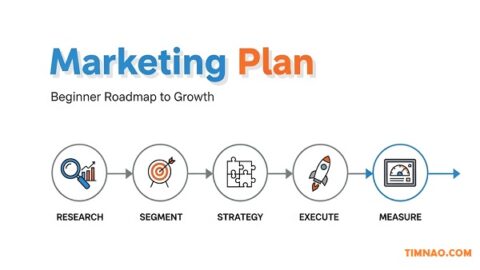Why Smart Investors Still Choose Gold in 2025: Unlock Its Timeless Power 🪙
Gold trading for beginners in 2025 is no longer limited to Wall Street elites or seasoned commodity pros. With modern platforms, AI-powered insights, and global economic shifts, even first-time investors can now access the world’s most time-tested asset with just a few clicks. But while gold has been a symbol of wealth for centuries, trading it successfully requires more than just buying low and selling high.
Today, gold sits at the intersection of economic uncertainty, technological innovation, and cultural demand. It’s influenced by everything from interest rate decisions and currency fluctuations to Diwali celebrations and semiconductor shortages. That means to truly succeed in gold trading, you need a clear roadmap—one that balances strategy, psychology, timing, and tools.
Whether you’re aiming to protect your wealth, ride seasonal price waves, or simply explore an exciting new asset class, this guide will break down gold trading in a way that’s actionable, beginner-friendly, and fully updated for 2025.
Let’s dive into everything you need to know to start strong and shine brighter in the gold market.
📚 Table of Contents
- 🪙 The Timeless Allure of Gold: Why It Still Matters in 2025
- 📉 What Moves the Market? Key Drivers of Gold Prices
- 🔧 Choose Your Weapon: Spot, Futures, ETFs & More
- 🧠 The Psychology of Gold Investors (And How to Think Like One)
- 🧭 Smart Strategies for New Gold Traders
- 🏦 The Big Players: Who’s Really Moving the Gold Market
- 📊 Tools of the Trade: Charts, Indicators & Economic Clues
- 🌐 Gold in the Real World: Tech, Jewelry, Geopolitics
- 🌎 Global Supply & Demand: Who Mines, Who Buys
- 📅 The Calendar Edge: How Seasonality Shapes Gold Opportunities
- 🛡️ Regulations & Risk Management You Can’t Ignore
- 💡 Final Takeaways: Stay Sharp, Stay Gold
- ❓ FAQs: Beginner Questions About Gold Trading Answered
🪙 The Timeless Allure of Gold: Why It Still Matters in 2025
Gold isn’t just shiny metal—it’s a powerful financial tool with deep historical roots. For over 5,000 years, civilizations from ancient Egypt to modern economies have cherished gold for its ability to store value, symbolize wealth, and hedge against uncertainty.
But why does gold still matter in 2025, when we have cryptocurrencies, AI-powered markets, and digital everything?
Gold Is Still the Ultimate “Safe Haven”
When global chaos erupts—whether it’s war, inflation, or market crashes—investors seek safety. And gold has proven, time and again, to be one of the most trusted assets to protect wealth. For example:
- During the 2008 global financial crisis, gold surged while stock markets tumbled.
- In 2020, during the COVID-19 pandemic’s peak, gold hit record highs, even as most other assets faltered.
In 2025, with geopolitical tensions and economic volatility rising again, gold continues to shine as a strategic hedge.
A Strong Hedge Against Inflation
Inflation erodes the purchasing power of fiat currencies. But gold? It tends to move up when inflation climbs. That’s why seasoned investors use it to protect their wealth when the value of money is falling. The 1970s are a textbook example—gold rose over 2,000% while inflation soared.
In today’s world, where governments inject trillions into economies and interest rates remain unstable, gold remains a vital part of inflation protection.
Central Banks Still Love Gold
Don’t just take our word for it—look at what the biggest players are doing. Central banks in China, Russia, and India are increasing their gold reserves to reduce dependence on the U.S. dollar. In fact, according to the World Gold Council, central banks bought more gold in 2024 than any year in the past 50 years.
Why? Because gold offers monetary sovereignty and insurance against currency risk.
Cultural Power That Moves Markets
Beyond finance, gold holds deep cultural value in countries like India and China. From wedding seasons to festivals like Diwali or Lunar New Year, massive gold buying during these periods can move global prices.
Even if you’re not a traditional investor, understanding the emotional and cultural force behind gold demand gives you an edge.
📉 What Moves the Market? Key Drivers of Gold Prices
Understanding what drives the gold market helps you spot opportunities before everyone else. Here are the top forces behind gold’s price movements in 2025:
1. Economic Uncertainty
Economic downturns, recessions, or even the fear of them tend to push gold prices up. Why? Because gold feels safe when everything else feels risky. Keep an eye on:
- Recession forecasts
- Unemployment data
- Debt crises or currency devaluation
2. Inflation & Interest Rates
When inflation rises and real interest rates (interest rate minus inflation) fall below zero, investors flock to gold. Low interest rates reduce the “opportunity cost” of holding non-yielding assets like gold, making it more attractive.
📌 Pro Tip: Watch central bank announcements. If the U.S. Federal Reserve signals lower rates, gold usually jumps.
3. U.S. Dollar Strength
Gold is priced in U.S. dollars. So when the dollar weakens, gold becomes cheaper for foreign buyers, increasing demand—and prices. The inverse is also true.
Use tools like the U.S. Dollar Index (DXY) to monitor currency strength and predict gold movement.
4. Geopolitical Tensions
Wars, trade disputes, or diplomatic breakdowns increase investor fear. Fear increases gold demand.
Example: During the Russia-Ukraine conflict, gold spiked as traders hedged against global instability.
5. Supply Constraints
Gold mining is slow, expensive, and hard to scale quickly. Even if demand explodes, supply can’t keep up—which can create price surges.
🔧 Choose Your Weapon: Spot, Futures, ETFs & More
Before diving into the gold market, it’s essential to understand the different ways you can trade or invest in gold. Think of them as tools in your financial toolbox. Each has its advantages, risks, and ideal use cases. Here’s a breakdown of the most popular gold trading vehicles in 2025:
💰 Spot Gold (Physical & Digital)
Spot gold refers to buying or selling gold for immediate delivery, based on the current market price.
- Physical gold includes bars, coins, and jewelry.
- Digital gold platforms now allow fractional ownership without physical storage (e.g., Glint, Vaulted, or Kinesis).
✅ Pros:
- Tangible asset (especially for physical gold)
- No counterparty risk
- Long-term store of value
⚠️ Cons:
- Requires secure storage and insurance
- Can be illiquid or hard to sell quickly
- Premiums and taxes may apply
📈 Gold Futures Contracts
Futures are agreements to buy or sell gold at a predetermined price on a set date in the future. You don’t need to own any gold upfront—just speculation.
These are traded on regulated exchanges like COMEX and are often used by professional traders and institutions.
✅ Pros:
- High liquidity
- Leverage allows for potentially large gains
- No need to store physical metal
⚠️ Cons:
- Leverage increases risk (you can lose more than you invest)
- Complex for beginners
- Requires margin accounts and strict risk controls
📌 Pro Tip: If you’re new, avoid using leverage until you’re confident in your market analysis and risk management skills.
💼 Gold ETFs (Exchange-Traded Funds)
ETFs, like SPDR Gold Shares (GLD), are popular among casual and institutional investors alike. These funds track the price of gold and can be traded like regular stocks.
✅ Pros:
- Easy to buy and sell through a brokerage
- No storage or insurance worries
- Great for portfolio diversification
⚠️ Cons:
- Annual fees (typically small)
- You don’t own actual gold, just shares in the fund
- Price can slightly diverge from spot market
💡 Want exposure to gold in your IRA? ETFs are the most straightforward path.
⛏️ Gold Mining Stocks
Instead of gold itself, you can invest in companies that mine gold. Top picks include Barrick Gold or Newmont Corporation.
✅ Pros:
- Potential for outsized returns if gold prices rise
- Can benefit from operational efficiencies or exploration success
⚠️ Cons:
- Subject to company-specific risks (debt, management, politics)
- More volatile than gold prices alone
🧠 Smart Tip: If you’re bullish on gold and want equity exposure, mining stocks or gold-focused mutual funds may be worth exploring.
📦 Gold Options
Options allow you to bet on future price movements of gold with limited risk. They give you the right (but not the obligation) to buy or sell gold at a certain price before a specific date.
✅ Pros:
- Defined risk
- Flexible strategies (hedging, speculation)
⚠️ Cons:
- Can expire worthless
- Requires deeper understanding of the market
🧠 The Psychology of Gold Investors (And How to Think Like One)
Behind every gold trade is a human decision, shaped by emotions, fear, hope, and deeply held beliefs about value, history, and security.
👑 Gold Is Emotional
Gold is more than an asset—it’s a symbol of wealth, security, and status. That’s why investors often behave differently with gold compared to stocks or bonds.
In moments of crisis (financial crashes, wars, pandemics), the emotional safety of gold becomes just as important as its financial performance.
This emotional connection can lead to:
- Overbuying during panic
- Holding too long during price drops
- Underestimating volatility
🧘♂️ Beginner Advice: Try to balance your emotional instincts with objective data. Don’t chase trends. Have a plan before you invest.
🧠 How Smart Gold Investors Think
The most successful gold traders and investors share a few key psychological traits:
1. They think long-term.
Gold is often a slow-moving asset. Patience is crucial. Unlike meme stocks or crypto, gold’s biggest value often shows up over years, not weeks.
2. They use gold as insurance, not a lottery ticket.
Gold isn’t about “getting rich quick.” It’s about preserving wealth. Smart investors allocate 5–15% of their portfolios to gold as a hedge.
3. They understand cycles.
Gold moves in macroeconomic cycles, not just headlines. Understanding how inflation, interest rates, and currencies interact gives savvy investors an edge.
4. They don’t let fear control them.
Yes, gold spikes during crises—but smart traders don’t buy in panic. They prepare before uncertainty hits.
🧩 Behavioral Traps to Avoid
Becoming a successful gold trader means avoiding these classic beginner mistakes:
- Confirmation Bias: Only seeking news that supports your opinion (e.g., “gold is going to $5,000!”)
- Anchoring: Holding on to an outdated price expectation even when market conditions change
- Loss Aversion: Holding on to losing positions too long, hoping they’ll rebound
🚀 Mindset Tip: Successful gold investing is a marathon, not a sprint. Focus on risk-adjusted returns, not flashy gains.
🧭 Smart Strategies for New Gold Traders
If you’re new to gold trading, jumping in without a plan is like sailing without a compass. The gold market may be less volatile than crypto or penny stocks, but it still requires strategy, discipline, and an understanding of the broader financial environment.
Here’s how to get started with confidence and clarity in 2025:
🎯 1. Start Small & Learn by Doing
Before going all-in, begin with a modest investment—preferably through ETFs or fractional digital gold platforms. This allows you to:
- Observe market movements in real-time
- Learn how global events impact price
- Avoid emotional decision-making with large sums
📌 Beginner Tip: Practice with a demo account on platforms like eToro or IG to build confidence before trading real money.
📅 2. Time Your Trades With Macroeconomic Events
Gold tends to move based on macro events rather than company earnings or product launches. Pay close attention to:
- Central bank meetings (especially the U.S. Federal Reserve)
- Inflation reports (like CPI and PPI)
- Unemployment data
- Geopolitical developments
🧠 Example: When inflation rises faster than expected and the Fed delays rate hikes, gold prices often rally as real yields fall.
🔐 3. Use Stop-Losses to Protect Your Capital
Even the safest asset can drop in value. Use stop-loss orders to prevent a small loss from turning into a major one.
- For ETFs or spot positions, set a stop-loss 5–10% below your entry.
- For futures or options, manage leverage cautiously and always define your risk upfront.
💡 Golden Rule: Never risk more than 1–2% of your capital on a single trade.
📈 4. Follow the Trend, Don’t Fight It
While gold can move in long, slow trends, trying to predict tops or bottoms is often a losing game. Instead, use a trend-following approach:
- Combine technical indicators like moving averages, RSI, or MACD
- Wait for confirmation before entering trades
- Stay in the trade until the trend shows clear signs of reversal
📊 Simple System Example:
- Buy when gold crosses above its 50-day moving average
- Exit when RSI crosses below 50
🧠 5. Blend Fundamentals & Technicals
Great gold traders understand both why a price moves (fundamentals) and when to enter or exit (technicals).
Here’s a quick blend for beginners:
- Use economic news to identify long-term direction
- Use chart patterns or indicators to pinpoint timing
🧭 Pro Strategy: If inflation is climbing (bullish fundamental), wait for a pullback on the chart (technical setup) before buying.
📒 6. Keep a Trading Journal
Track every trade you make—whether you win or lose. Write down:
- Entry and exit prices
- Why you entered the trade
- What you learned
This habit will help you improve faster than any course or book. Patterns emerge, and you’ll quickly spot what works and what doesn’t.
🏦 The Big Players: Who’s Really Moving the Gold Market
Gold doesn’t move at random. Behind every price shift are major players with massive capital and specific motivations. Understanding who they are and how they behave can give you a major edge.
🏛️ 1. Central Banks
These are the giants. Central banks buy and sell gold to manage reserves, reduce exposure to the U.S. dollar, and ensure monetary stability.
Key players include:
- The U.S. Federal Reserve
- The European Central Bank (ECB)
- The People’s Bank of China (PBoC)
- Russia’s Central Bank
📌 In recent years, China and Russia have aggressively increased their gold holdings to hedge against global financial risks and reduce dependence on USD-based assets.
💡 What to Watch: When central banks increase reserves, it usually pushes gold prices higher. Watch official announcements and reserve data releases from the IMF and World Gold Council.
💼 2. Institutional Investors
Hedge funds, pension funds, and mutual funds often allocate a portion of their portfolio to gold—especially during times of inflation or market instability.
Institutions tend to:
- Use ETFs and futures contracts
- Trade in massive volumes
- Rely heavily on macroeconomic data and algorithms
When big institutions pile into gold ETFs like GLD, the price tends to surge due to sheer volume.
🧠 Smart Tip for Retail Traders: Follow institutional flow. Look at ETF inflows and outflows weekly.
🧑💼 3. Retail Traders (Like You!)
Retail investors—everyday people using apps like Robinhood or Interactive Brokers—have grown in influence, especially in volatile times.
Retail traders usually:
- React faster to the news
- Prefer easy-access vehicles like ETFs or digital gold
- Follow sentiment and social trends
While not as powerful individually, the collective action of millions of retail traders can move the needle—especially when paired with social media hype.
📢 Caution: Don’t follow the crowd blindly. Social media “gold rush” moments often come at the top of a price spike.
⛏️ 4. Mining Companies
Gold miners like Barrick Gold or Newmont don’t just extract gold—they also influence supply.
When production drops (due to strikes, disasters, or declining ore grades), it reduces supply, potentially pushing prices higher.
🛠️ Mining company earnings reports and production forecasts can offer clues about future supply trends.
💍 5. Jewelry & Cultural Buyers
In countries like India and China, gold demand spikes during wedding seasons and festivals.
- In India, Diwali and wedding seasons create massive physical demand.
- In China, Lunar New Year and prosperity traditions play a similar role.
📅 Seasonal Insight: Gold demand typically rises from October to February due to these cultural events—often boosting prices during this window.
📊 Tools of the Trade: Charts, Indicators & Economic Clues
You don’t need a PhD in economics to trade gold—but you do need to learn the tools that professional traders rely on. Whether you’re day trading or investing long-term, the right mix of technical and fundamental tools helps you make smarter, more confident decisions.
📉 1. Reading Gold Price Charts
Charts reveal everything from long-term trends to minute-by-minute price moves. The most common types used in gold trading include:
- Line Charts – Good for simple long-term views
- Bar Charts – Show open, high, low, and close prices
- Candlestick Charts – Most popular; reveal market sentiment with patterns
📌 Tip: Use daily or weekly timeframes for swing or position trading. Use 15-min or hourly for short-term trades.
🧭 2. Key Technical Indicators
Here are the top indicators beginners should know:
✅ Moving Averages (MA)
Smooths out price trends. A crossover of short-term (e.g., 50-day) above long-term (e.g., 200-day) often signals a buy.
✅ Relative Strength Index (RSI)
Measures momentum. An RSI above 70 = overbought. Below 30 = oversold.
✅ MACD (Moving Average Convergence Divergence)
Helps confirm trends. Look for crossovers above or below the zero line.
✅ Fibonacci Retracement
Identifies potential support/resistance levels. Especially helpful in volatile markets.
💡 Strategy: Combine MA + RSI for trend-following trades. For example, enter a buy when RSI dips below 30 during an uptrend.
📊 3. Economic Clues That Influence Gold
Gold’s price doesn’t just depend on technicals. Economic indicators often dictate big-picture direction.
📈 Inflation Data
- Use the Consumer Price Index (CPI) and Producer Price Index (PPI)
- Rising inflation usually pushes gold higher as investors seek protection
💸 Interest Rates
- Gold moves inversely to real interest rates
- Watch for Federal Reserve decisions and speeches
- Lower rates = bullish for gold; higher rates = bearish
💵 U.S. Dollar Index (DXY)
- Since gold is priced in USD, a strong dollar weakens gold prices, and vice versa
- DXY falling? Gold is likely to rise
🌍 Geopolitical Events
- Conflict, war, or trade tensions usually cause gold spikes as a safe-haven asset
- Example: During the early stages of the Russia-Ukraine conflict, gold surged as global uncertainty rose
🧠 Pro Insight: Track central bank meetings, inflation updates, and global headlines. These events often cause gold’s biggest moves, sometimes within minutes.
🌐 Gold in the Real World: Tech, Jewelry, Geopolitics
Gold isn’t just a trading ticker. It plays real-world roles in technology, fashion, and international politics. Understanding this makes you a better trader by helping you grasp what drives demand and sentiment beyond Wall Street.
💻 1. Gold in Technology & Industry
Gold’s superior conductivity and resistance to corrosion make it essential for electronics and aerospace.
Used in:
- Smartphones
- Laptops
- Medical devices
- Satellites and space gear
- Renewable energy tech (like hydrogen fuel cells)
📈 As demand for advanced electronics and clean energy grows, industrial demand for gold rises too. That’s long-term bullish for gold.
💡 Trading Angle: Tech booms = slow-building industrial demand. Stay informed about gold usage in semiconductors, AI chips, and EV components.
💍 2. Jewelry: The Emotional and Cultural Driver
The jewelry industry accounts for over 40% of global gold demand. Two countries dominate:
- India – Weddings and religious festivals (especially Diwali)
- China – New Year celebrations and status-driven buying
These cultural forces create seasonal patterns in gold demand—often spiking in Q4 and Q1 each year.
📅 Smart Strategy: Consider going long ahead of peak seasons like Indian wedding periods (Oct–Feb).
🌐 3. Geopolitics: When Fear Fuels Gold
Gold’s safe-haven status shines brightest during global turmoil. Political instability often drives prices up as investors seek stability.
Key examples:
- War (e.g., Gulf War, Ukraine conflict)
- Trade tensions (e.g., U.S.–China disputes)
- Pandemics (e.g., COVID-19 in 2020)
- Energy crises (e.g., OPEC oil supply shocks)
💡 In 2025, ongoing tensions in the South China Sea and shifting alliances in the Middle East are creating volatility. Traders who stay informed can capitalize on emotional spikes in gold prices.
🔗 4. Currency Battles & De-Dollarization
Many countries are moving away from the U.S. dollar in global trade. To back up their currencies, they’re increasing gold reserves.
For example:
- Russia and China are leading gold accumulators
- BRICS nations are exploring gold-backed settlements
📌 The more the world shifts away from USD, the more central banks demand gold—driving long-term price strength.
🌎 Global Supply & Demand: Who Mines, Who Buys
Understanding the supply chain of gold—from the mine to the market—is crucial for any trader. Just like oil or coffee, gold prices respond to production changes, geopolitical issues, and shifts in buyer behavior across the globe.
Let’s break it down:
⛏️ Where Gold Comes From: Top Mining Countries
Gold doesn’t just appear—it’s mined, refined, and transported from some of the most resource-rich (and politically complex) areas in the world.
Here are the top gold-producing countries in 2025:
- China – The world’s largest gold miner
- Russia – High output, but sanctions and geopolitical issues complicate exports
- Australia – A stable supplier with massive reserves
- Canada – Strong mining infrastructure and innovation
- United States – Especially from Nevada’s massive gold belts
📉 Supply constraints can arise from:
- Political instability
- Strikes or labor disputes
- Environmental regulations
- Resource depletion in older mines
💡 Trading Edge: A disruption in any major producing nation can tighten global supply, creating a bullish setup for gold.
📦 Recycling: The Hidden Gold Supply
Not all gold is mined. A significant portion comes from recycled sources like old jewelry, electronics, and bullion sales.
- In economic downturns, gold recycling often increases as individuals liquidate assets for cash
- In bull markets, recycling slows—people hold onto their gold expecting prices to rise
🧠 Pro Insight: Recycling data (published quarterly by the World Gold Council) gives early clues about shifting sentiment and supply fluctuations.
🛒 Who’s Buying All This Gold?
Gold demand is diverse. Here are the four key demand sources:
🏦 1. Central Banks
As mentioned earlier, they’re buying gold to diversify reserves and reduce USD exposure. China, Turkey, and India have ramped up buying in 2024–2025.
💍 2. Jewelry Buyers
Accounts for roughly 40% of total gold demand. Cultural and seasonal events play a huge role here (covered in the next section).
📈 3. Investors
Gold bars, coins, ETFs, and digital gold have surged in popularity, especially during inflationary or volatile periods.
🛠️ 4. Industrial Users
From microchips to medical tools, high-tech industries use gold in small amounts—but on a massive scale.
📌 Bonus Tip: When institutional investors and central banks are buying gold at the same time, it’s often the sign of a strong upward trend forming.
📅 The Calendar Edge: How Seasonality Shapes Gold Opportunities
Most beginners overlook the power of seasonality in gold trading. But historical data shows that gold prices often follow predictable patterns throughout the year.
Why? Because human behavior is seasonal—festivals, holidays, agricultural cycles, and even weather influence when people buy gold.
📊 Seasonal Gold Trends (Based on Historical Data)
🟢 January to March
- Strong performance due to Chinese New Year and investment resets
- Portfolio rebalancing often drives ETF inflows
🟡 April to June
- Usually quieter months; price consolidation is common
- Watch for opportunities to accumulate on dips
🔴 July to September
- Volatility increases with global economic events and positioning before Q4
- Indian wedding season buying often begins
🟣 October to December
- One of the strongest periods historically
- Driven by:
- Indian festivals (Diwali)
- Holiday gifting in Western countries
- Year-end portfolio adjustments
📌 Example Insight: Over the past 15 years, gold has shown consistent strength from mid-September through January—an ideal window for seasonal traders.
📅 Gold Seasonality Trading Tips for Beginners
✅ 1. Time Your Entry With Demand Surges
Enter long trades in late summer or early fall to capitalize on increased jewelry demand in India and China.
✅ 2. Watch for Dip Opportunities in Spring
April–June often presents pullbacks or sideways movement, ideal for buying at lower prices.
✅ 3. Sync With Global Events
Pair seasonality with macro trends (e.g., inflation, dollar weakness) to increase the probability of successful trades.
✅ 4. Use a Seasonality Tool
Tools like Seasonax allow you to visually analyze seasonal trends in gold and other assets.
🧠 Mindset Shift: While many traders chase daily price swings, successful gold investors zoom out and think in seasons and cycles—not just hours or days.
🛡️ Regulations & Risk Management You Can’t Ignore
Gold might be ancient, but its modern-day trading is tightly regulated, especially when it comes to derivatives and digital platforms. Ignoring regulations—or worse, underestimating risks—can cost you far more than you think.
Here’s what every beginner needs to know:
📜 Understanding Regulations
🏦 Regulated Exchanges
Gold futures and options are traded on regulated markets like:
- COMEX (New York)
- LME (London)
- TOCOM (Tokyo)
These markets are monitored by regulators such as the CFTC in the U.S. and FCA in the U.K. to protect traders and maintain transparency.
💡 Beginner Tip: Only use licensed platforms and brokers. If you’re unsure, check regulatory bodies’ websites for a list of authorized platforms.
🌐 Online Platforms & Brokers
If you’re using apps or brokers to buy gold ETFs, mining stocks, or digital gold, always confirm:
- They’re registered with a government financial authority
- They offer segregated accounts to protect your funds
- They provide clear risk disclosures
🛑 Be cautious of unregulated crypto-style platforms offering “gold tokens” without proper asset backing or transparency.
🔐 Why Risk Management Is Non-Negotiable
Gold is often seen as safe, but trading it—especially through futures, options, or leveraged ETFs—comes with serious risk.
✅ 1. Always Use a Stop-Loss
Don’t leave your trades open-ended. Set a stop-loss level on every trade to limit your downside.
✅ 2. Diversify Your Portfolio
Don’t put all your capital in gold. Use it as a hedge or supplement, not the whole strategy.
✅ 3. Manage Position Size
Only risk 1–2% of your account on any single trade. If gold drops sharply, you won’t lose sleep—or your account.
✅ 4. Avoid Emotional Trading
Don’t enter just because the price is moving. Let technical and fundamental analysis guide your decision—not fear or FOMO.
🧠 Golden Rule: Protect your capital first. Without it, you can’t make a comeback.
💡 Final Takeaways: Stay Sharp, Stay Gold
Gold isn’t just a metal—it’s a mindset.
As you enter the world of gold trading and investing, remember that success comes not from chasing hype but from understanding the timeless principles that drive this market.
✨ Key Lessons Recap:
- Gold is a safe haven with real value in uncertain times.
- It responds to macro trends—inflation, interest rates, currency strength, and geopolitical risk.
- You can trade gold through spot markets, futures, ETFs, mining stocks, and options.
- Use a mix of technical and economic tools to spot opportunities.
- Seasonality and global demand cycles offer timing advantages.
- Respect regulations and practice strong risk management every step of the way.
🚀 Whether you’re looking to hedge against inflation, diversify your portfolio, or capitalize on gold’s seasonal cycles, this timeless asset still has massive potential in 2025 and beyond.
Stay informed. Stay disciplined. And stay gold.
❓ FAQs: Beginner Questions About Gold Trading Answered
❓ Is gold trading safe for beginners?
Yes—if approached cautiously. Start with gold ETFs or digital gold before venturing into complex instruments like futures or options. Educate yourself and always manage risk.
❓ How much of my portfolio should I allocate to gold?
Most experts suggest 5–15% of your total portfolio, depending on your risk tolerance and market outlook. Gold is meant to protect, not replace, your core investments.
❓ What’s the best way to invest in gold for the long term?
Use gold ETFs (like GLD), physical bullion, or allocated digital gold from trusted platforms. These are cost-effective and secure ways to hold gold without active trading.
❓ When is the best time of year to buy gold?
Historically, September to January has shown stronger performance due to Indian weddings, Chinese New Year, and portfolio rebalancing. Use seasonality to your advantage.
❓ Can I make money trading gold daily?
Yes, but short-term gold trading requires technical skills, discipline, and proper tools. It’s not passive income—it’s active and risky. Most beginners do better starting with longer-term investing first.
❓ Is gold still a good hedge against inflation in 2025?
Absolutely. Gold continues to be one of the most reliable long-term hedges against currency debasement and inflation, especially as central banks around the world debase their fiat currencies.
Reference video:









